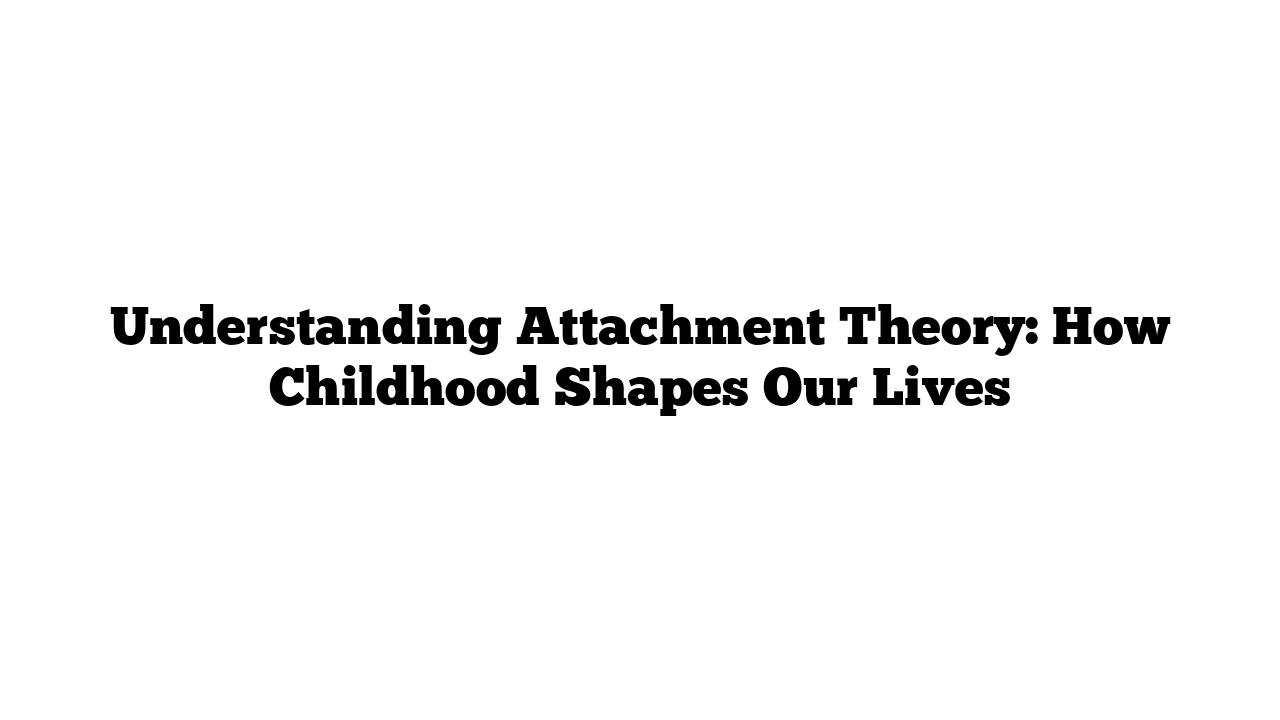Attachment theory suggests that the emotional bond we form with our primary caregiver during our early years is crucial for our development. This bond influences how we see ourselves and our relationships throughout life. Let’s explore how attachment styles affect our well-being and social skills.
The Importance of Secure Attachment
A strong attachment to a caregiver helps us feel safe. When we feel secure, we are more willing to explore the world around us. We know that we can return to our “safe base” whenever we need support. This security fosters trust and helps us connect with others, leading to greater success in life.
On the other hand, a weak bond can leave us feeling insecure. If we don’t trust that our caregiver will be there, we may hesitate to explore new experiences. Research shows that securely attached individuals are more likely to trust others and form healthy relationships, while those with insecure attachments often struggle with social skills and relationships.
Types of Attachment Styles
Attachment theory identifies one secure attachment style and three types of insecure attachment styles:
- Secure Attachment: Comfort in exploring and forming relationships.
- Anxious/Ambivalent Attachment: Clinginess and anxiety in relationships.
- Anxious/Avoidant Attachment: Avoidance of emotional connection.
- Anxious/Disorganized Attachment: Confusion about love and safety.
Understanding these styles can help us navigate our relationships better.
A Family’s Story: The Smiths
Let’s look at a hypothetical family, the Smiths, to illustrate these attachment styles. Mr. and Mrs. Smith are loving parents with four children: Luka, Ann, Joe, and Amy.
- Luka (6 years old): After Mr. Smith’s death, Luka remains resilient. He feels secure in his bond with his mother and continues to thrive. His positive self-image helps him become a trusting and optimistic young man.
- Ann (3 years old): Ann struggles with the loss of her father and the resulting changes in her mother. She feels anxious and becomes clingy, seeking attention through loud behaviors. This behavior leads others to see her as unpredictable, damaging her self-esteem.
- Joe (2 years old): Joe spends time with his uncle, who believes in strict discipline. Joe learns to hide his emotions to avoid punishment. As an adult, this avoidance creates challenges in his relationships, leading to a negative self-image.
- Amy (1 year old): Amy is sent to an under-resourced nursery where staff may be neglectful or abusive. This experience leaves her confused about safety and love, leading to social withdrawal and a poor self-image.
The Impact of Early Attachment
Our attachment styles form during our early years, often when we cannot express our anxieties. This inability can create toxic stress, which affects brain development and immune function. In severe cases, toxic stress can alter gene expression, impacting our health for decades.
We can assess attachment styles using a method called the “Strange Situation.” This involves observing a child’s reactions when their caregiver returns after a brief separation. Securely attached children typically seek comfort and then return to play, while insecurely attached children may display anxiety or avoidance.
Long-Term Effects of Attachment
Research shows that our attachment styles can have lasting consequences. For instance, a study at the University of Minnesota found that they could predict high school dropout rates with 77% accuracy based on a child’s attachment style at age 3. Another study at Harvard indicated that those with a broken relationship with their mother were more likely to experience health issues later in life.
John Bowlby, a pioneer in attachment theory, famously said, “What cannot be communicated to the mother cannot be communicated to the self.” This emphasizes the idea that those with insecure attachments may struggle to understand their own feelings and identities.
Nurturing Secure Attachments
It’s essential to pay attention to the early years of a child’s life. A child who feels securely attached can build friendships, develop optimism, and create strong relationships throughout their life. Conversely, insecurely attached children may miss out on these valuable opportunities for growth.
By fostering secure attachments, we can help children navigate their feelings and develop healthy, fulfilling relationships. Understanding attachment theory is a crucial step toward nurturing well-being in both children and adults.
For more information on attachment theory, check out these resources:
This knowledge empowers us to create stronger connections with ourselves and others, leading to healthier, happier lives.
